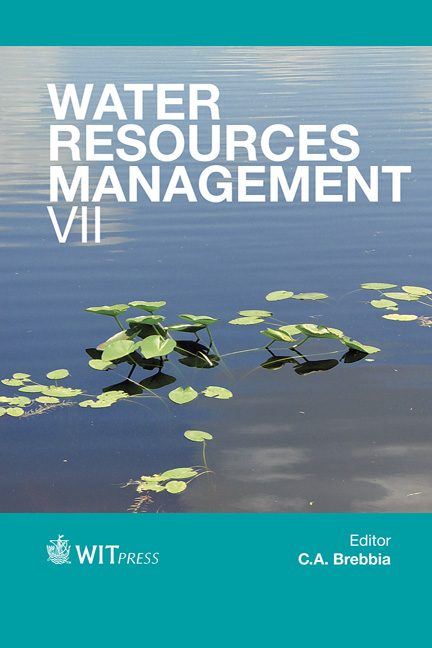Sectorization Of Environmental Risk And Human Consumption Of Manganese In Groundwater Extracted From The Sinaloa River Aquifer
Price
Free (open access)
Transaction
Volume
171
Pages
11
Page Range
247 - 257
Published
2013
Size
1,078 kb
Paper DOI
10.2495/WRM130221
Copyright
WIT Press
Author(s)
M. Norzagaray Campos, M. Ladrón de Guevara Torres, E. Troyo Diéguez, P. Muñoz Sevilla, O. Llanes Cárdenas & H. A. González Ocampo
Abstract
The research reported in this paper had three objectives. The first was to draw a map of the piezometric contours of the Sinaloa River Basin to enable an interpretation of the hydrodynamic behavior of the basin. The second objective was to establish a relationship between the hydrodynamics of the basin and levels of concentration of manganese (Mn), an element which is vital for human survival but toxic at high levels. Given that some of the rural and urban inhabitants of the basin consume untreated groundwater, the third objective was to create a map of the region showing the locations of high manganese level risk in the water. To characterize the hydrodynamics, 40 wells were selected at random. Groundwater depth, ground elevation, hydraulic load and piezometric surface were measured. A water sample was taken from each selected well, and spectrometric laboratory techniques employed to measure manganese and iron levels; the latter as a check on the robustness of Mn measurements on untreated water. The piezometric analysis showed the presence of a regional water source and a local water source, which has protected the basin from saline intrusion for many years. However there are sources of high manganese concentrations in a range of 0.01 to 1.2 mg L-1, which are moving with these two flows at average receptive velocities of 4.2×10-3 mh-1 and 1.6×10-3 mh-1. In an analysis of
Keywords
manganese, iron, groundwater, risk, human consumption, flow





